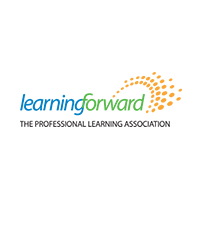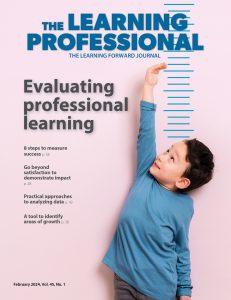In a recent webinar, Preparing educators for school closings and a new learning environment, Learning Forward asked educators what their districts or schools were doing right when it came to supporting them during this unprecedented period of quarantines and school closures. More than 70 educators responded, showing us what districts are doing right and what opportunities exist for making improvements.
What are districts getting right?
Overall, the webinar respondents indicated that schools and districts are meeting their needs by communicating clearly, providing resources for staff and leader learning, and paying attention to the well-being of staff, students, and the community.
Here is a summary of what we heard from participants:
Communicate clearly
- Establish expectations/guidelines for what is expected of educators.
- Offer a singular, unified message that avoids overlapping or conflicting instructions.
Provide resources for learning
- Help educators stay in touch and grounded with regular and frequent meetings.
- Provide time for individual and team learning in the beginning to give them time to process new environments and processes.
- Curate a central collection of resources for more learning.
- Make sure everyone has access to available technology and the learning for how to best use that technology.
- Show educators how to help students in need. Anticipate what students might be experiencing in your region so educators are able to provide proper responses or instructions.
- Give your leaders the knowledge they need to support mentors, who are struggling themselves for how to best support their mentee teachers.
Pay attention to staff emotional health
- Look for ways to reduce pressure. Be understanding and flexible as people adjust to the uncertainty of the new normal.
- Allow teachers and staff time to be at home and settle in with their families. No need to rush into keeping students busy.
- Ease fears about losing incomes with transparency and reassurance, even it if seems like you are stating the obvious.
Pay attention to student well-being
- Remember that any plan needs to be equitable for all students.
- Align your plans with district priorities for meeting student needs, such as cultural responsiveness, and social-emotional learning needs.
Pay attention to community needs
- Consider varying aspects of the community’s needs, such as the district that established a few days of childcare for the children of first responders.
- Communicate clearly to help avoid confusion or panic.
- Give families and the community permission to not stress about homework or school so they can rest and be together.
- Post regular and frequent updates, ideally online and visible to the public.
What are educators asking for?
Almost 60 educators shared what kind of support they need. While many were asking for the same supports as above, here are five additional items that have left educators wanting.
Distance learning plans
- Not all districts had these in place when they announced closures.
(To see examples of well-established district plans, review the webinar chat transcripts for links provided by participants.)
Support for principals on continuing school community
- Building leaders are looking for ways they can continue their culture of connectedness.
Support for instructional coaches
- Instructional coaches need to know how to support teachers and teams while navigating uncharted waters.
Strategies for leading during these unusual times
- Leaders at all levels are challenged with moving their staff in unprecedented directions.
Non-technology-based plans
- Many students have limited access to technology, so districts and schools are racing to support them.
Learning Forward will continue to add resources to address these needs and more. Check out our collection of resources at learningforward.org/COVID.








